Deerberry (Vaccinium stamineum) of the Heath (Ericaceae) family is a medium-sized deciduous shrub that has small bell-shaped flowers with flared corolla lobes. The species occurs from east Texas and Oklahoma, northeast to the Atlantic and Gulf Coasts. In Arkansas, it occurs statewide except for some portions of the Mississippi Alluvial Plain. The genus name is obscure but presumably derives from the Latin vaccinus, of cows. The specific epithet is a reference to the plant’s distinctive, prominent stamens. Preferred habitat is sunny to partly shaded sites that have well-drained, sandy to rocky, acidic soils, such as dry ridges, glade margins, and upland woods.
Deerberry is a leafy deciduous shrub that may be 1 to 6+ feet tall and wide. Plants, especially in response to injury or fire, produce branching runners that bear roots and support new sprouts (ramets). Shrubs may have several trunks and many ramets of varying age, forming clonal thickets. Shrubs in more sunlight tend to be rounded and densely branched, while those in more shade can become upright and loosely branched.

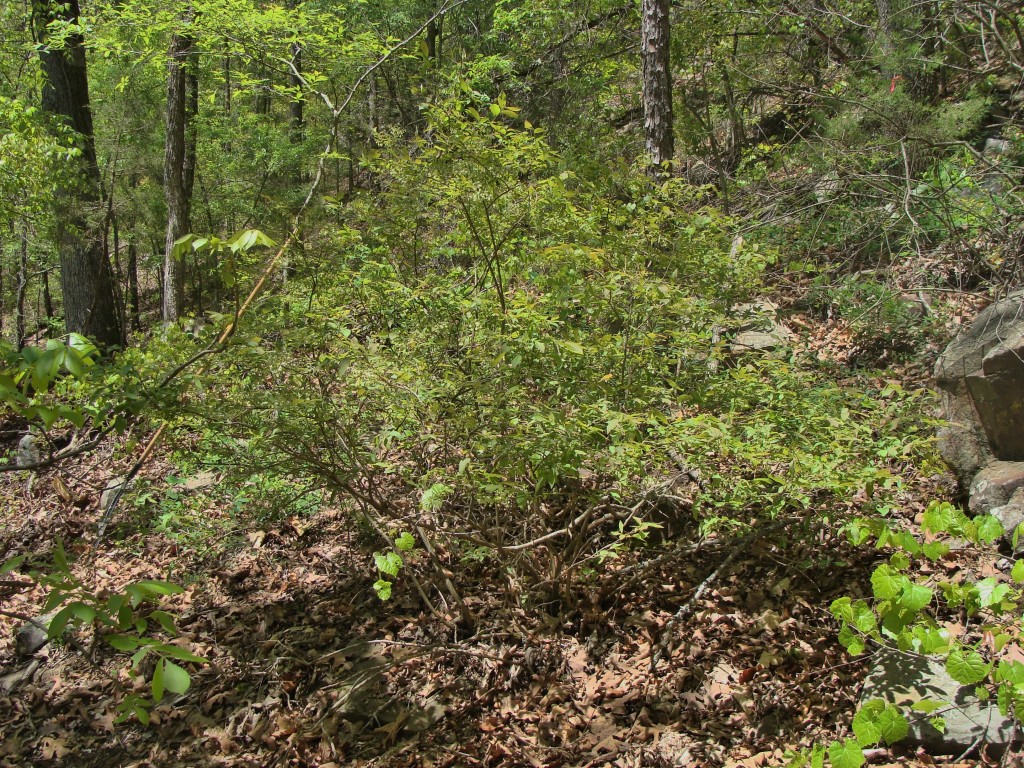
In winter, year-old reddish twigs bear small, dormant, terminal and lateral buds that are protected by a few imbricated (overlapping) scales. In late winter, scales are pushed aside as each developing bud yields a single unbranched leaf-bearing or flower-bearing twig. Leaf-bearing twigs occur at or near the exterior of the shrub; early in growth, they are zigzagged, leaf-to-leaf. Flower-bearing twigs are not persistent into the next growing season.
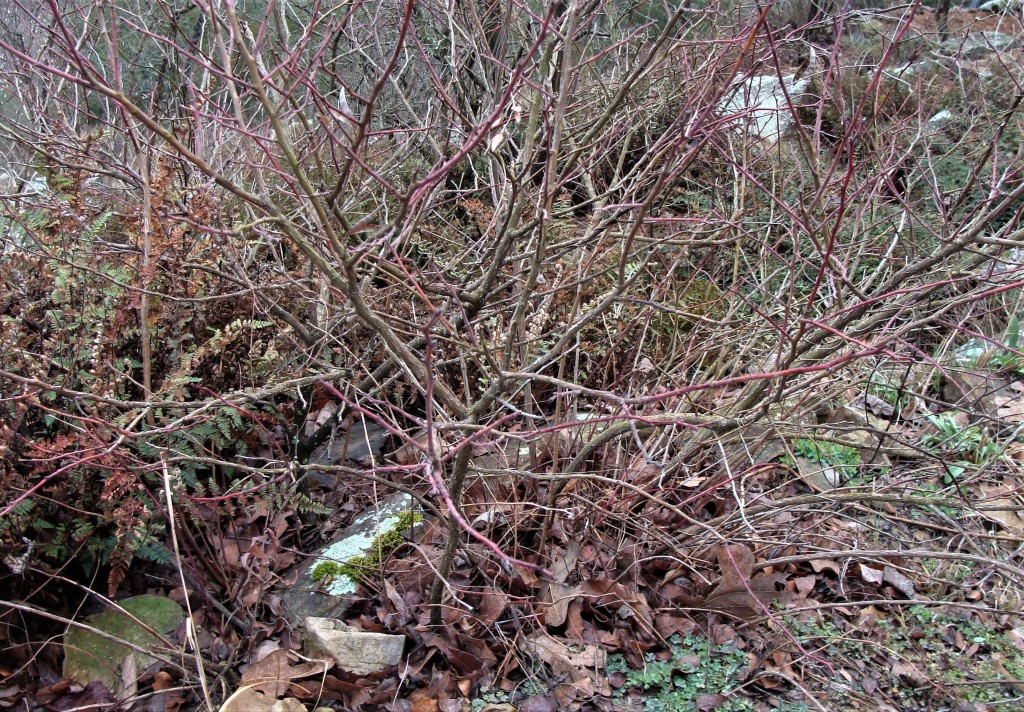
Leaves are simple, cyclically alternate, and smooth-margined. New leaves are yellowish-green, becoming medium green later in the growing season and yellowish to reddish late in the season. Elliptic to oblong-elliptic, leaves are 1 to 3 inches long and ¼ to 1 inch wide, becoming progressively larger toward the twig tip, with rounded to wedge-shaped (cuneate) bases and acuminate to acute apexes. Texture varies from papery (chartaceous) to leathery (coriaceous) in response to available sunlight. Twigs, new leaves, and petioles may be densely pilose early but lose their pubescence with age.
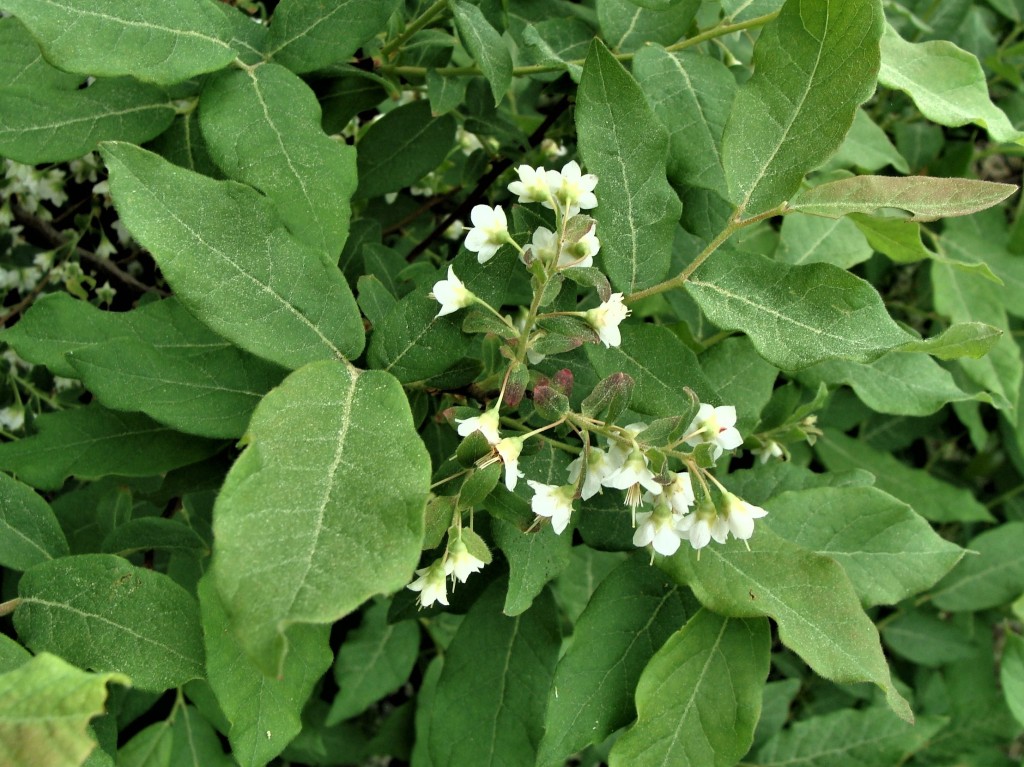
The inflorescence (on flower-bearing twigs), in mid to late April, is a raceme of up to 10 alternate dangling flowers. Each flower, subtended by a small, leafy bract, is borne on a slender pedicel to ⅜ inch long. The raceme axis tends to be densely pilose; the pedicels are mostly glabrous. Bracts drop off in summer as fruits mature.

Flowers, about ¼ inch long and wide, have a yellowish green, bell-shaped (campanulate) calyx with five broadly triangular, recurved lobes and a white, campanulate corolla with five broadly rounded lobes. Ten stamens are strongly exserted from the corolla. Each elaborate stamen comprises a short stubby white filament, two yellow spurs at the filament-anther junction, and an anther whose sacs taper into slender tubes. (Pollen typically accumulates in these tubes and is vibrated out by visiting insects.) The ovary is inferior. The style is exserted well beyond the stamens, the stigma becoming receptive only after pollen from the same flower is dispersed––an adaptation that promotes cross-pollination.
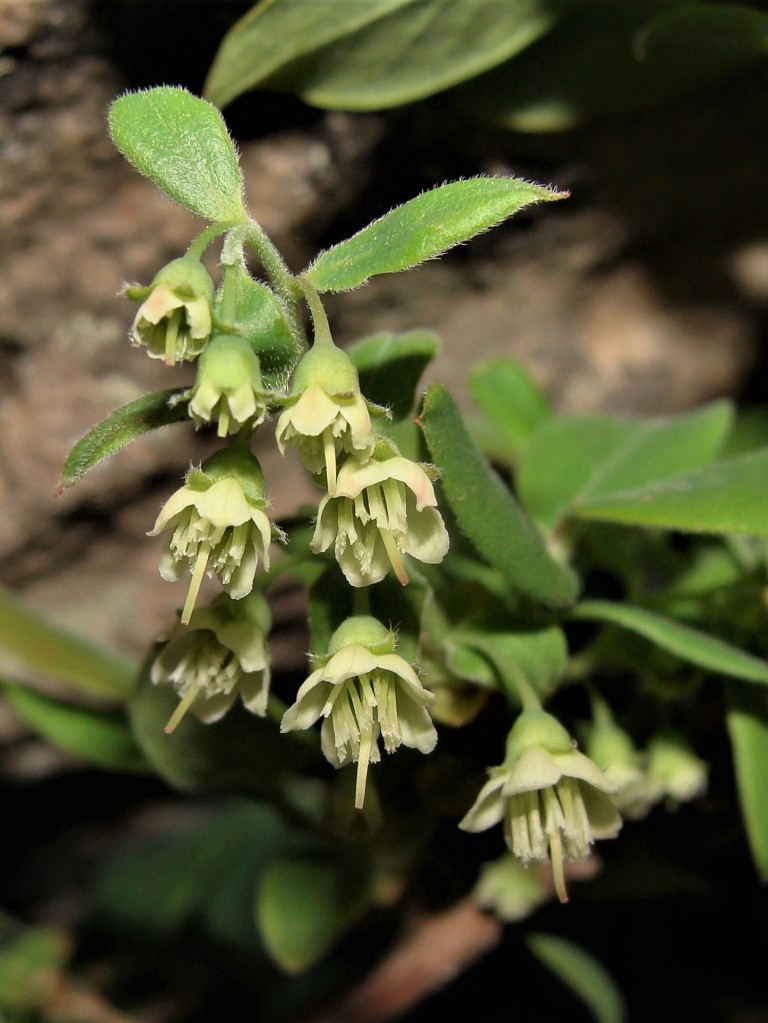
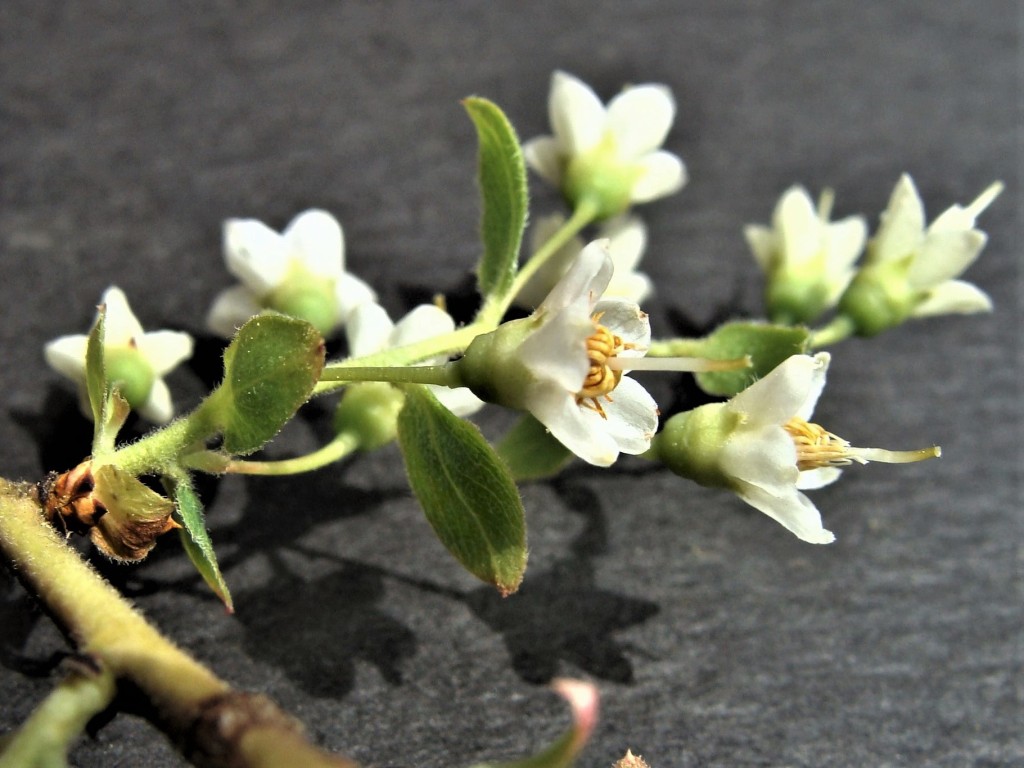
The inferior ovaries have five chambers with axile placentation. With fertilization, corolla and stamens drop off the developing fruit; the calyx persists. Fruits, ovoid “blueberries,” to about ⅜ inch wide, can be greenish, yellowish, blue or purplish at maturity. They ripen by late summer.

Deerberry is a compact leafy shrub that has visual appeal year-round and may be an excellent choice in a natural area, as a specimen plant, a grouping, or an informal hedge-row. The species is not noted to be an aggressive self-seeder. Clumps may develop, but should not be detrimental in a natural setting. Deerberry does well in well-drained rocky soils and is drought tolerant, when established. Plants are an important food source for insects, birds, and small mammals. They provide nectar for bees and butterflies and are host plants for red-spotted purple (Limenitis arthemis astyanax) and other butterflies and moths. They are subject to deer “damage.” Palatability for humans is variable depending on the particular source-shrub and personal taste.
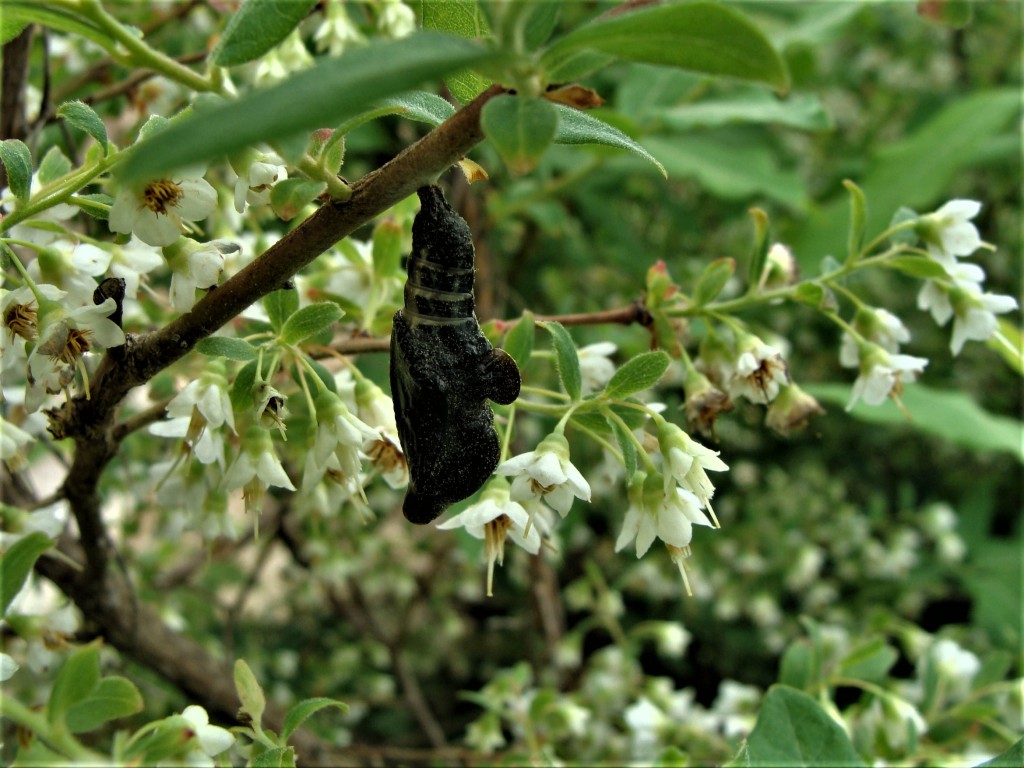
Other species of the genus that occur in Arkansas are sparkleberry (Vaccinium arboreum), Elliott’s blueberry (Vaccinium elliottii), black highbush blueberry (Vaccinium fuscatum), lowbush blueberry (Vaccinium pallidum), and highbush or common blueberry (Vaccinium virgatum). Distinguishing characteristics that make deerberry comparatively easy to identify include 1) bracteate inflorescences, 2) flowers with flared, bell-shaped corollas and exserted styles and stamens, and 3) mature mostly green fruit that drop off in late summer.
Article and photographs by ANPS member Sid Vogelpohl

